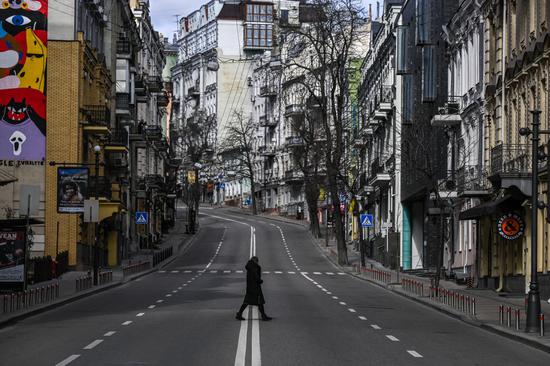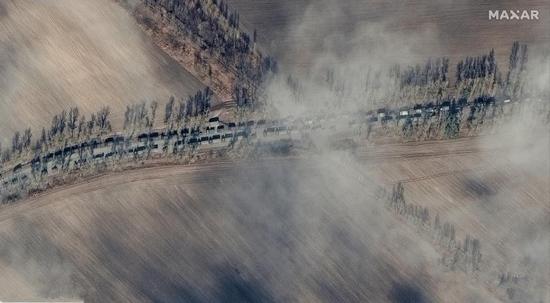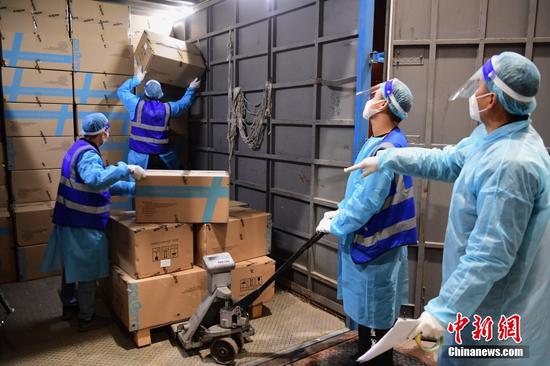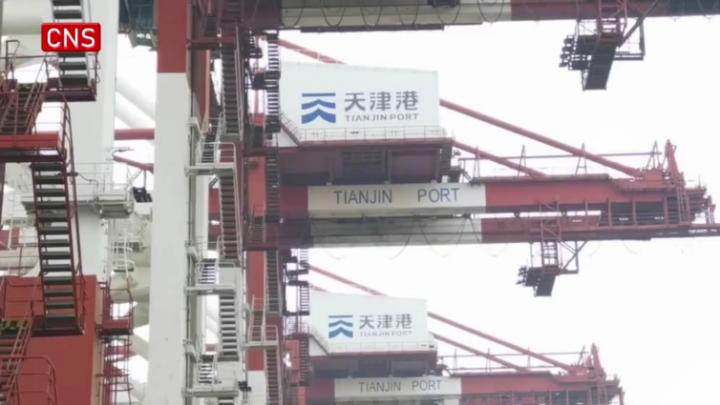China is expected to increase its soybean self-sufficiency rate to 20 percent by 2025 and see a dramatic increase in the production of soybean and oil crops in five to 10 years, agricultural officials and experts said.
The No 1 Central Document for this year, which was unveiled in late February as an indicator of policy priorities, highlighted the project of increasing soybean and oil crop capacities among key tasks for comprehensively advancing rural vitalization.
Tang Renjian, minister of agriculture and rural affairs, said that although grain production in the country remains a tight balance, the structure is still a big concern due to the low self-sufficiency rate of soybean and oil crops.
The demand for soybeans increases dramatically with rising living conditions and a burgeoning livestock industry. China imported 96.5 million metric tons of soybeans last year while producing 16.4 million tons, which is a self-sufficiency rate of less than 15 percent, according to data from the General Administration of Customs.
Currently, domestic soybean production can meet people's food consumption needs, including tofu and bean products. Imported soybeans, which are genetically modified and have a higher oil yield, are mainly used for edible plant oil and providing feed proteins in animal husbandry.
"We strive to adjust the structure and determine to expand production of soybean and oil crops, planting and harvesting as much as possible," Tang told a news conference after the document was released.
Zhang Wenli, a researcher at the ministry's rural economy research center, said it is the first time that increasing soybean and oil crop capacities has been listed as one of the tasks in the annual document.
Eighty-five percent of soybean consumption in China relies on imports, mainly from Brazil, Argentina and the United States, Zhang said, adding that the country also imported more than 10 million metric tons of edible plant oil last year.
China needs to increase the self-sufficiency rate due to increasing uncertainties caused by the COVID-19 pandemic and trade frictions dating back to 2018, she said.
Tang said the country will increase subsidies for corn and soybean growers and support crop rotation in the northeast, the major soybean producing area in the country. Meanwhile, rice planting in some areas where groundwater overdraft occurs is expected to be replaced by the planting of soybeans.
The combined planting of corn and soybeans, in which two rows of corn are planted next to four rows of soybeans, meets the needs of the two crops and relieves the tightness of limited planting area between them.
The planting method has been tested in southwestern China, including Sichuan province, covering more than 467,000 hectares of farmland so far, and will be further promoted in northern and northwestern China, Tang said.
Subsidies from the central budget have been arranged to support local farmers and cooperatives in applying this method, which has also been covered by agricultural insurance in some places.
"The technique is quite mature, and the next move is to promote it in larger areas and improve varieties to fit the conditions in various regions," Zhang said, adding that better use of equipment and infrastructure such as agricultural machinery and irrigation systems is needed.
The country will also develop other oil crops such as rapeseed, peanuts, tea seed oil, sunflowers and sesame, Tang said.
The ministry has asked local authorities to plant rapeseed on 330,000 hectares of idle farmland in winter.
"With efforts in five to 10 years, we will see a big improvement in the self-sufficiency rates of soybean and oil crops," he said.
By 2025, the planting area of soybeans in China is expected to reach 10.7 million hectares, while the output is projected to hit 23 million tons, according to the 14th Five-Year Plan for national crop production, which the ministry released last year.
"If we achieve the goal, the self-efficiency rate of soybeans will increase from 15 percent to 20 percent," Zhang said.
The protein content of domestic soybeans, which are suitable for making bean products, is relatively high, but the oil yield rate of imported soybeans can exceed 20 percent, around 2 percentage points higher than domestic ones.
We should increase domestic soybean yields and oil yield rate through integrated development of good varieties, planting methods, and relevant techniques," Zhang said.
The Chinese Academy of Agricultural Sciences sent a 200-member team late last month to support field management of wheat, rapeseed and peanuts and to provide guidance on the combined planting of soybeans and corn.
The National Food and Strategic Reserves Administration will conduct auctions to release soybeans from state reserves, and some edible oil will also be sold as part of its rotation of oil stocks, according to an announcement on Feb 22.
Considering the lower-than-expected production in major South American soybean producers due to bad weather, and the recent crisis in Ukraine, global soybean and edible oil prices are expected to keep rising, Zhang said.
The auction, which has already started, aims to fill the gap of raw material in the country and satisfy the demands of processing companies in order to stabilize the market, she added.


















































 京公网安备 11010202009201号
京公网安备 11010202009201号